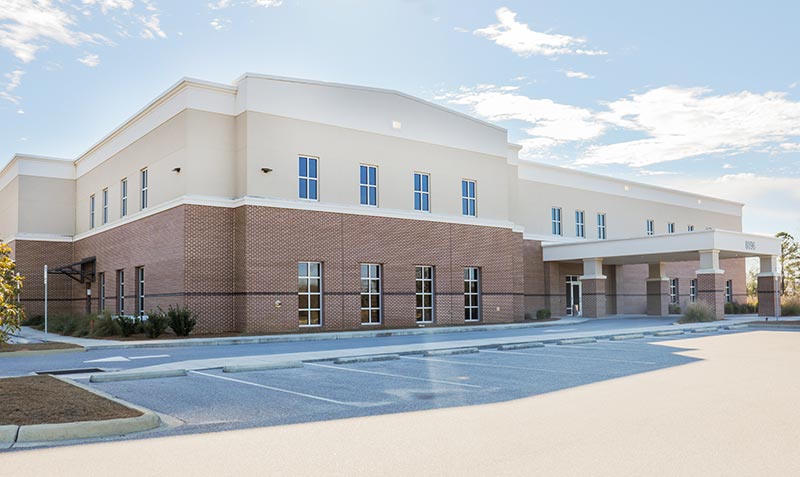Comparing Urgent Care Clinics: What Establishes Our Clinic Apart
Comparing Urgent Care Clinics: What Establishes Our Clinic Apart
Blog Article
Comprehending the Function of Urgent Care in Providing Timely Treatment for Non-Life-Threatening Conditions
Urgent care centers have become an important element of the health care landscape, attending to the instant requirements of clients with non-life-threatening conditions. By providing accessible and timely clinical solutions, these facilities effectively link the void in between health care and emergency situation divisions. Nonetheless, the ramifications of their duty prolong beyond mere ease, motivating a more detailed evaluation of when and how these facilities are used. Comprehending the nuances of urgent treatment could substantially influence person end results and the overall effectiveness of health care delivery. What variables contribute to their expanding importance in modern medicine?
What Is Urgent Care?
Immediate treatment refers to a classification of clinical solutions designed to attend to non-life-threatening problems that require immediate interest. These centers function as an intermediary between key care doctors and emergency clinic, supplying a convenient option for clients that need timely treatment without the extensive waiting times commonly connected with emergency divisions.
Urgent care centers are usually staffed by doctor, consisting of doctors, registered nurse experts, and physician assistants, who are trained to identify and deal with a large selection of problems. Usual solutions provided by these centers include treatment for minor injuries, diseases, and infections, in addition to diagnostic examinations such as X-rays and research laboratory job.
Furthermore, urgent care facilities commonly approve walk-in patients, getting rid of the demand for visits. On the whole, urgent care plays a crucial function in the healthcare system, making sure people can access essential clinical solutions immediately and successfully.

When to look for care at an immediate treatment center rather of a main treatment doctor or an emergency space,Several people may find themselves unpredictable regarding. Immediate care is developed to deal with non-life-threatening conditions that require punctual focus yet are not severe sufficient to require an emergency clinic browse through.
Usually, one should think about immediate care for problems such as minor cracks, sprains, cuts needing stitches, or infections like urinary tract infections. Additionally, chilly or influenza signs and symptoms, rashes, and allergies can also be properly taken care of in this setup.
It is essential to note that immediate treatment is not appropriate for life-threatening emergency situations, such as chest pain, problem breathing, or serious blood loss, which demand instant emergency clinic intervention.
Individuals that do not have accessibility to a medical care physician or can not secure a prompt appointment might additionally gain from urgent care solutions. Inevitably, understanding when to use immediate care can bring about extra effective medical care delivery, enabling individuals to obtain the proper degree of care based on their certain health demands.
Benefits of Urgent Treatment Centers
Selecting urgent care facilities for non-life-threatening conditions provides numerous advantages that enhance patient experience and access. One key advantage is the lowered wait times contrasted to typical emergency areas. Immediate treatment centers generally operate a first-come, first-served basis, allowing clients to receive prompt medical attention without the lengthy delays typically connected with healthcare facility setups.
Furthermore, immediate care facilities supply extensive hours, consisting of weekends and nights, suiting patients with varying timetables. This adaptability guarantees that individuals can look for treatment when it is most practical for them, additionally advertising prompt treatment.

Furthermore, these centers frequently supply a detailed series of solutions, consisting of analysis examinations and small procedures, all under one roof covering. This debt consolidation of solutions not only simplifies the patient experience however likewise fosters a much more natural approach home to taking care of non-life-threatening health issues, ultimately profiting total client results.
Common Conditions Treated
At immediate treatment centers, a range of non-life-threatening problems can be efficiently dealt with, providing individuals with prompt and accessible clinical assistance. These facilities are specifically proficient at addressing issues that need punctual attention yet do not position an instant risk to life or arm or leg.
Common conditions treated at urgent treatment facilities consist of small injuries such as cracks, pressures, and sprains. Furthermore, they handle health problems like colds, flu, and infections, including urinary system infections and sinus problems. Skin click here to read conditions, ranging from rashes to insect attacks, are likewise frequently resolved. Urgent treatment centers are furnished to execute required diagnostic tests, such as X-rays and lab tests, enabling them to provide thorough care.
Additionally, immediate care carriers can provide inoculations, helping to prevent the spread of transmittable diseases - Urgent Care. They also provide services for small procedures, such as suturing wounds or draining pipes abscesses. By providing these varied services, immediate care centers play a crucial role in linking the space between key treatment and emergency solutions, ensuring individuals get prompt treatment for a variety of conditions without the requirement for lengthy delay times usually connected with emergency rooms
Exactly How Urgent Treatment Supports Healthcare System
Immediate care centers play an important role in sustaining the general medical care system by minimizing the burden on emergency departments and offering prompt accessibility to medical treatment for non-life-threatening conditions. By dealing with cases such as small injuries, infections, and health problems, urgent care centers permit emergency divisions to concentrate on more vital patients needing prompt focus.
Furthermore, immediate treatment facilities improve healthcare access, providing prolonged hours and an extra convenient alternative to standard key treatment settings. This ease of access is especially valuable for patients who may not have a routine physician or that call for prompt therapy outside of common office hours. As an outcome, immediate care facilities efficiently minimize wait times and boost person contentment.
Additionally, immediate treatment facilities add to cost savings for both individuals and the healthcare system by giving lower-cost solutions compared to emergency departments. This economic performance is crucial in an age of climbing healthcare costs, allowing patients to obtain necessary treatment without sustaining inflated costs.
Conclusion
Finally, urgent treatment centers play an important role in the healthcare system by supplying punctual treatment for non-life-threatening conditions. By More hints linking the void between health care and emergency clinic, these facilities guarantee that patients get timely clinical interest without the lengthy delay times typically connected with emergency situation departments. The access and performance of urgent treatment centers add substantially to minimizing the overall problem on health care sources, improving patient end results, and promoting an extra efficient medical care delivery system.
Immediate care facilities have arised as a vital part of the healthcare landscape, addressing the immediate requirements of individuals with non-life-threatening problems. Immediate care visits normally sustain reduced out-of-pocket costs compared to emergency situation division check outs, making treatment much more affordable for clients without endangering quality. Immediate treatment centers are furnished to do necessary diagnostic examinations, such as X-rays and laboratory tests, enabling them to give extensive treatment.
By providing these varied solutions, urgent care centers play a crucial duty in bridging the space between key care and emergency situation solutions, guaranteeing people obtain prompt treatment for a wide range of problems without the requirement for lengthy delay times usually associated with emergency situation rooms.
Moreover, immediate treatment centers boost health care ease of access, using extended hours and a more hassle-free choice to standard primary care settings.
Report this page